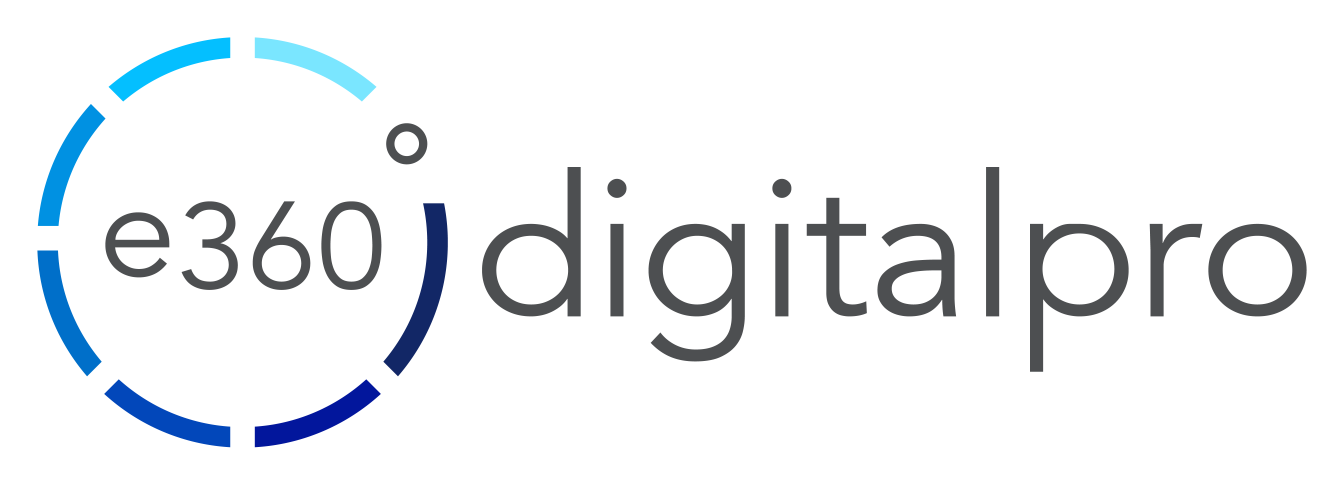Front-end? Back-end? Nah! We are talking about the real game-changer, Full Stack!! The year is 2024. The web is evolving faster than ever, and full stack developers are opting for everything including cutting-edge frameworks, ever-shifting trends, and ever-increasing demands. Feeling overwhelmed and left behind? Fear not, grab your coffee and come along where we’ll discuss about the top skills for full stack developers lately. We are here with the top 10 skills for a full stack developer that will be helpful in your transition from a good developer into a full-stack force to be reckoned with. Gear up, because it’s the perfect time to explore the secrets to mastering the front-end, conquering the back-end, and becoming a truly future-proof web development warrior.
Ready to level up your career and impress clients like never before? Dive in, and let’s build something amazing, TOGETHER.
Full Stack Developers & The Skill Set They Need In 2024
Let’s start from the very basics, who is a full stack developer?
According to Coursera:
“A full stack developer, then, is someone who can do both types of web development. They have a wide variety of skills that enable them to build, manage, and improve server-side operating systems, databases, libraries, and frameworks, while also understanding the UX design needs of a web or mobile application. Their skill sets allow them to move seamlessly between the frontend and backend, which makes them highly valued and in-demand tech professionals.”

Hmmm, interesting! Now, let’s shift gears and explore all the essential skills that every full-stack junkie must wield with precision.
1) Modern JavaScript Frameworks
In the ever-evolving world of full-stack development, mastering modern JavaScript frameworks is no longer a nice-to-have, it’s a must-have. These frameworks provide efficient ways to build dynamic, interactive, and scalable user interfaces, the essential foundation for captivating web experiences. But with so many options available, choosing the right ones can be overwhelming.

Three frameworks reign supreme in modern JavaScript:
React
Developed by Facebook, React is renowned for its component-based architecture, virtual DOM (Document Object Model), and extensive ecosystem. Its flexibility and performance make it ideal for building complex, single-page applications (SPAs) and mobile apps using React Native.
As Hackr.io stated:
“Developed by Facebook, React focuses on building reusable components that manage their own state, leading to more predictable and easier-to-debug code.”
Angular
Angular, backed by Google, offers a robust opinionated framework with built-in tools and functionalities. Its strong typing and structure ensure code maintainability and scalability, making it suitable for large enterprise applications.
Vue.js
Known for its gradual adoption approach and ease of use, Vue.js offers a balance between flexibility and structure. Its progressive nature allows developers to integrate it seamlessly into existing projects and gradually adopt its features.
But which one to choose? The answer depends on your specific needs and preferences.
- React is ideal for complex projects with a vast community and ecosystem. Good for developers comfortable with lower-level control and JavaScript concepts.
- Angular is excellent for large-scale enterprise applications requiring maintainability and structure. Suited for developers who appreciate built-in features and a clear development path.
- js is perfect for smaller projects, quick prototyping, and gradual adoption. Great for developers seeking a flexible framework with an easy learning curve.
However, don’t limit yourself to just one! Understanding the strengths and weaknesses of each framework empowers you to choose the right tool for the job and potentially even combine them for hybrid approaches.
2) GraphQL API Development
Efficient and flexible data handling is paramount in modern day web development. Enter GraphQL, a query language and runtime that’s rapidly changing how APIs are built and consumed. As a full-stack developer, mastering GraphQL empowers you to create powerful, performant, and developer-friendly APIs that cater to the specific needs of your applications.

Also, according to Free Code Camp:
“GraphQL was originally developed by Facebook as a way to simplify data fetching for their mobile applications. They needed a way to make complex data requests from the server without causing performance issues or over-fetching data. GraphQL was born out of the need to solve these problems.”
Why Choose GraphQL?
GraphQL is a modern approach to API design that offers several advantages over traditional REST APIs. With GraphQL, developers can request exactly the data they need in a single query, reducing over-fetching and under-fetching of data compared to REST.
Compared to traditional REST APIs, GraphQL offers several advantages:
Flexibility
GraphQL allows clients to request only the specific data they need, reducing over-fetching and improving performance by minimizing unnecessary data transfer.
Efficiency
Server-side logic in GraphQL optimizes data retrieval, resulting in reduced payload sizes and minimized network traffic. This streamlined approach enhances application performance, especially on slower networks or devices.
Strong Typing
With GraphQL’s strongly-typed schema, developers can ensure data integrity and easier integration between client and server components. This leads to fewer errors during development and smoother data exchanges.
Single Endpoint
GraphQL simplifies API management by consolidating data interactions through a single entry point. This reduces complexity and enables more efficient data retrieval and manipulation across various sources.
Real-time Updates
GraphQL supports subscriptions, enabling real-time data updates by pushing changes to clients as they occur. This feature is invaluable for applications requiring live data updates, such as messaging apps or real-time dashboards.
Advanced Practices
These advanced practices typically encompass sophisticated techniques and strategies to optimize and enhance the usage of GraphQL APIs. They often involve leveraging advanced features of GraphQL to address specific challenges or to achieve particular goals.
Pagination
Efficiently manage large datasets by allowing clients to request data in manageable chunks, improving application performance and user experience.
Authorization
Implement robust security measures to control data access based on user roles and permissions, ensuring data security and integrity.
Caching
Optimize performance by caching frequently accessed data and minimizing database calls, reducing latency and improving responsiveness.
Testing
Ensure API quality with comprehensive query and mutation testing, identifying and addressing issues early in the development process to ensure reliability in production environments.
3) CI/CD Pipelines
As of Tech Target:
“CD likewise relies heavily on tools and automation to take a build through advanced testing, including functional, user acceptance, configuration and load testing. These validate that the build meets requirements and is ready for use in a production environment.”

Gone are the days of manual deployments and frantic release cycles. In today’s fast-paced world, CI/CD (Continuous Integration & Continuous Delivery) pipelines are the unsung heroes of efficient development. As a full-stack developer, mastering CI/CD empowers you to automate deployments, ensure code quality, and deliver updates swiftly and reliably.
Why CI/CD Should Be in Your Full-Stack Toolkit?
Here are a few reasons why you should definitely consider CI/CD in your full stack toolkit:
Faster Releases
Automate repetitive tasks like building, test, and deploying, enabling frequent and efficient updates.
Improved Quality
Catch bugs early with automated testing, ensuring cleaner code and a more stable product.
Reduced Risk
Minimize manual errors and inconsistencies with automated processes.
Team Collaboration
Streamline workflow and provide visibility into the development process for enhanced collaboration.
Popular CI/CD Tools and Platforms
Some popular CI/CD Tools and Platforms are as follows:
Jenkins
Open-source platform offering flexibility and customization.
CircleCI
Cloud-based solution with powerful automation features.
Travis CI
Popular for open-source projects and integration with GitHub.
GitLab CI/CD
Integrated pipeline feature within the GitLab platform.
AWS Code Pipeline
Cloud-based solution for building and deploying AWS applications.
CI/CD is no longer just a trendy buzzword, it’s a fundamental aspect of modern development. By getting your hands on the CI/CD principles and leveraging the power of automation, you can discover increased efficiency, improved quality, and faster time-to-market, becoming a full-stack developer of the future.
4) Infrastructure as Code (IaC)
Manually configuring servers and battling deployment headaches are just so old-fashioned!! Infrastructure as Code (IaC) empowers you, the full-stack developer, to exercise code as your weapon, automating infrastructure provisioning and management for a smoother, more efficient journey.

Why Go Codified?
Geeks For Geeks explained laC in one of their blogs as “Infrastructure as Code (IaC) is a method of managing and provisioning IT infrastructure using code, rather than manual configuration. It allows teams to automate the setup and management of their infrastructure, making it more efficient and consistent. This is particularly useful in the DevOps environment, where teams are constantly updating and deploying software.”
The real question still lingers! Why Go Codified?? So, to dig in deep, read all the WHYs….
The Force of Automation is Now Yours!
Automate repetitive tasks like infrastructure provisioning, configuration, and updates, saving time and reducing errors.
On a side note, if you are a full stack developer and want to explore the new web design trends for 2024, check out our blog.
Consistency is Key
Define and manage your infrastructure with code, ensuring consistent environments across development, testing, and production.
Version Control for Everything
Track changes, collaborate effectively, and easily roll back if needed, just like with your code.
Cloud Power at Your Hands
Leverage the benefits of cloud platforms like AWS, Azure, and GCP by integrating IaC for seamless deployments.
Essential Tools of the Trade
Looking for the essential tools of the trade? We have compiled them below for you:
Terraform
Open-source and versatile, popular for multi-cloud deployments.
Ansible
Powerful automation engine for configuring and managing complex infrastructure.
AWS CloudFormation
Built-in service for managing AWS infrastructure through code.
Advanced IaC Techniques
Some advanced laC Techniques are listed below, check them out:
Modular Infrastructure
Break down infrastructure into reusable components for improved maintainability and reusability.
Security as Code
Integrate security policies and best practices into your IaC workflows.
Testing & Validation
Ensure your IaC code behaves as expected with automated testing and validation.
Monitoring & Alerting
Keep an eye on your infrastructure health and proactively address any issues.
IaC is more than just a fancy concept – it’s a game-changer for modern developers. By embracing IaC, you can easily explore efficiency, consistency, and control, becoming a full-stack master who builds and manages like a true Jedi.
5) Database Management
Full-stack developers are like website superheroes, building everything from the pretty buttons to the hidden engine that makes it all work. But what about the data? That’s where database management comes in. Think of it like the brain behind the brawn!

What is Database Management?
Think of a database as the digital backbone of your website or app. It’s where all the valuable information resides – user accounts, product details, messages, and more. Database management, then, is like being the librarian of this vast digital library, ensuring everything is organized, accessible and secure.
Why Do Full-Stack Developers Need It?
Well, the real reason! Why Database Managemet is an essential skills for full stack developer in 2024?
So, the answer is pretty simple.
Enhanced Performance
Enhanced performance refers to optimizing queries, indexing data, or using caching mechanisms to store frequently accessed information. When your database performs better, it means your applications will run smoother and respond quicker to user actions.
Complex Functionality
It is all about the advanced features and capabilities of a database system. It could include things like stored procedures, triggers, or support for complex data types like JSON or XML. These features allow developers to implement sophisticated logic directly within the database, reducing the need for complex application code.
Scalability
Iis the ability of a database to handle increasing amounts of data and traffic without sacrificing performance. A scalable database can grow seamlessly as your application grows, whether that means handling more users, storing more data, or processing more transactions.
Data Integrity
Data integrity ensures that the data stored in the database is accurate, consistent, and reliable. This means enforcing rules and constraints to prevent invalid or inconsistent data from being entered into the database. For example, ensuring that each user has a unique email address or that a product’s price is always a positive number.
6) Progressive Web Apps (PWAs)
Remember those cool apps you can only get on your phone? Forget all that! As a full stack developer, you can now create amazing experiences like that directly on websites. That’s the magic of Progressive Web Apps (PWAs)!
Stated by developer.mozilla.org:
“PWAs typically look like platform-specific apps - they are usually displayed without the browser UI around them - but they are, as a matter of technology, still websites. This means they need a browser engine, like the ones in Chrome or Firefox, to manage and run them.”

Why are PWAs on our List?
It’s your time to supercharge your website with Progressive Web Apps (PWAs). Imagine app-like features, offline access, and boosted engagement – all without the hassle. Seems like a dream, right? Keep on reading as we’ll reveal the reasons for putting PWAs on our list.
Also, if you want to dig in deep about web 3.0 then read “Decoding Web 3.0 – Is it the End of Traditional Marketing?”
No App Store Hassle
Reach everyone on any device, no matter what phone they have. No waiting for approvals, just instant access for all users.
Works Even Offline
Don’t let bad internet be a barrier. PWAs work offline, just like real apps, ensuring a seamless experience even when connectivity falters.
Super-Fast and Smooth
Experience the difference! PWAs are lightning-fast and super responsive, delivering a smooth and enjoyable user experience that traditional websites often lack.
Easy To Discover
Google favors PWAs, making it easier for users to discover your awesome app through online searches.
Are You Ready to Build Your Own PWA?
No worries, you don’t need to be a coding wizard! There are tons of tools and resources to help you get started, like:
- dev:Your guide to learning all about PWAs.
- Workbox:Makes building service workers easy.
- Lighthouse:Checks if your PWA is working smoothly (and helps you fix things if it’s not!).
So, what are you waiting for? Ditch the app store hassle and join the PWA revolution! Build amazing experiences for everyone, online and offline, and watch your users go wild!
Summing Up Your Stack
Remember, the journey of a full-stack developer is never-ending. As technology evolves, so too must your skillset. Once you get your hands on the latest skills, you’ll be well-equipped to navigate the ever-changing world of web development.
Remember, the key is not just about mastering each skill individually but understanding their interconnectedness. By weaving these skills together, you’ll see your true potential as a full-stack developer, creating exceptional user experiences and becoming a valuable asset in any team.
So, don’t wait anymore! Start your journey today, acquire these superpowers, and become the full-stack developer you were always meant to be… Good Luck!!





